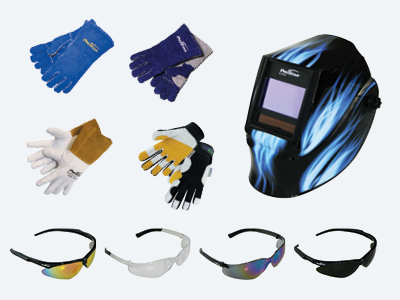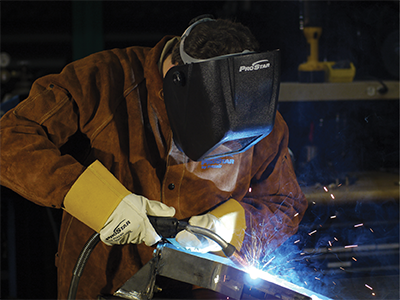From PPE to Setup: 6 Tips for Improving Welding Safety
When it comes to welding, you should not take shortcuts on the quality of your work or your personal safety. Whether you're working for a large manufacturing company, a small independent fabricator or in your home garage, welding poses hazards that can be harmful to you and those around you. Always read the safety information and the Safety Data Sheet supplied by the manufacturers of gases, materials and equipment used in welding operations. This information will identify safe practices that will protect you from health hazards, such as fumes, gases and arc burns. And remember, not all welding is the same – different gases, consumables or even the material that you’re welding may require special safety precautions, so be sure to read and be familiar with the safety standards and codes that apply to your work. Here are a few welding safety tips to get you started:

1. Study Up on Procedures
Successful welders know safety procedures like the back of their hand, but even experienced welders understand that every job is different. Take the time to educate yourself on safety guidelines set in place by both regulatory organizations and the company you work for to help ensure a safe, productive workspace for all.
2. Check Your Equipment
It is important to check that your equipment is functioning properly and is fully grounded before use. If a piece of equipment was running perfectly yesterday, don’t assume that it’s still in the same condition today. Always do a full inspection of your equipment.
3. Protect Yourself from Fumes and Gases
Fumes, gases and smoke emitted during welding can create a health hazard for welders unless proper precautions are taken. When welding, toxic fumes may accumulate, or shielding gasses may replace breathable air. Use an exhaust hood, downdraft table or fume collector to help remove fumes from your work area and follow all OSHA requirements for ventilation and respiratory protection.
4. Get Rid of Clutter
A cluttered workspace is one of the most common causes of welding fires and explosions, so it’s important to keep your work area clear, especially of any flammable materials. As a general rule, remember to stay organized and keep everything in its place to prevent trip or other hazards. Your workspace should only contain the tools and equipment you need for that specific project.
5. Avoid Electric Shock
Electric shocks happen when you are welding and you touch metal objects. Because welding requires the use of metal pieces very close to one another, it is essential to reduce the risk of shock. Cover the parts of the work piece that may have contact with the welder with items such as leather aprons, leather jackets, leather covered cushions and heat-resistant blankets. Also, remember to turn the power off at the end of each shift, or if you decide to take a break.
6. Dress for the Job

Wearing the proper attire is critical. Any exposed skin is vulnerable to the harmful effects of infrared and ultraviolet rays, so welders must be sure that they are covered appropriately. Here’s a quick look at the types of personal protective equipment (PPE) for welders:
- Eye and face protection: Safety glasses, face shields and auto-darkening welding helmets help protect the eyes and face from sparks, and also from potentially vision-damaging ultraviolet and infrared rays emitted by the welding arc.
- Respirators: Respirators help protect you from fumes, gases and smoke that the welding process creates.
- Fire resistant clothing: Fire-resistant clothing helps protects you from heat, fire and radiation created in the welding process and shields you from burns.
- Ear protection: Ear protection, such as noise reduction earmuffs, helps protect you from noise hazards that may be created in your workplace and sparks or splatter that could enter the ear.
- Boots and gloves: Insulated, flame resistant welding gloves and rubber-soled, steel toe-capped safety shoes help shield you from electric shocks, heat, fire, burns and falling objects.
Linde Knows Safety
Welding can be hazardous, even for an experienced worker. Welding safety measures can be implemented by following standard safety precautions and codes, inspecting welding equipment and ensuring that you are aware of your surrounding workspace before performing welding activities to minimize the risk of health and safety injuries. Contact us at 1-800-225-8247 to learn more about welding products, and click here to shop through Linde’s catalog of safety and protective equipment.




























